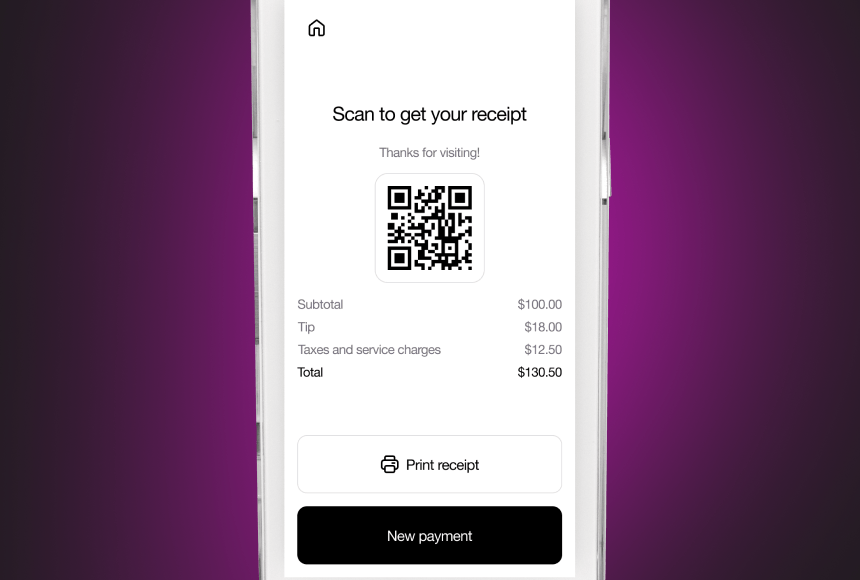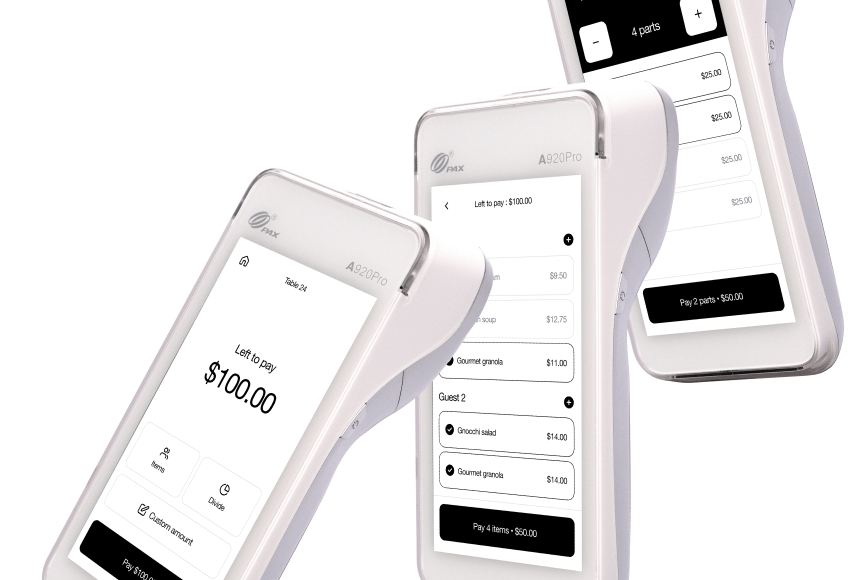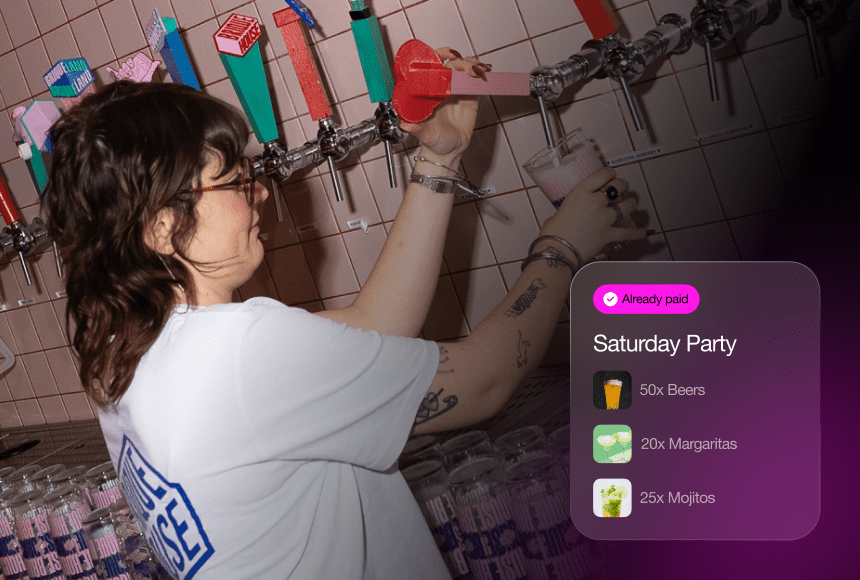
The Secret to Swift Service: Why Smart Terminals Accelerate Your Restaurant’s Success
What Are Smart Terminals and Why Do They Matter?
In a world where everything moves fast—online deliveries, smartphone apps, same-day shipping—restaurants still face challenges when it comes to quick and smooth payment processes. That’s why “smart terminals” have become crucial. Unlike traditional devices, smart terminals are modern payment solutions equipped with intuitive interfaces, flexible software, and built-in connectivity. They often rely on Wi-Fi, cellular data, or Bluetooth, making them far more agile than the bulky machines of the past.
Think of a chef’s trusty knife set—precise, durable, and versatile. Without those knives, preparing orders quickly becomes chaotic. The same holds true for your payment devices. A smart terminal eliminates the fumbling often seen when guests are ready to pay: no searching for a working cable, no wandering to a register. You simply carry or place the device at the table, allow guests to pay how they prefer—card, mobile wallet, or even a QR code option—and finalize the transaction within seconds.
This technology matters because it directly affects how smoothly your restaurant runs. In a high-traffic environment, shaving off even a few seconds per table transaction can add up. That means more time to engage with patrons, quicker table turnover, and fewer lineups during peak hours. Whether you own a fine dining spot or a casual diner, smart terminals give you an edge in an industry where speed and convenience matter almost as much as taste.
The Ripple Effects of Long Wait Times
Waiting too long for the bill can feel like that lingering smell of overcooked onions—it leaves a bad impression. According to a report by the National Restaurant Association, 69% of patrons cite speed of service as a significant factor in choosing where to eat. When customers sit around, uneasy and impatient, it impacts everything from their overall satisfaction to how likely they are to leave a tip or return.
Long wait times also create a bottleneck for your front-of-house staff. Servers spend excessive energy bouncing between tables, following up on checks, and troubleshooting outdated payment machines. This results in fewer opportunities to deliver personalized service or upsell desserts. A single delay can expand into a full-blown traffic jam during busy shifts.
Meanwhile, extended waits increase overhead. If you’re a restaurant located in a high-rent district, every minute counts. The more time diners spend waiting, the less likely you are to flip the table, and the fewer open seats you have for new customers. Waiting can also frustrate the kitchen staff if orders spring up haphazardly as servers get stuck fixing payment issues. Ultimately, those precious minutes can cost you revenue and harm guest satisfaction. Smart terminals are an effective way to eliminate those snags and keep the flow moving.
How Exactly Do Smart Terminals Halve Waiting Times?
Ever wonder why some restaurants always seem to run like clockwork? It’s often because they minimize disruptions at key points in the dining experience—especially at checkout. Here’s a breakdown of why smart terminals can slash wait times in half:
- On-the-Spot Transactions: Staff can bring a lightweight device to the table and finalize payment effortlessly. No traveling back and forth, no extra hardware to juggle.
- Multiple Payment Options: Contactless cards, EMV chip, magnetic stripe, mobile wallet, or QR-based solutions can all be handled on one terminal. Guests pay however they want, faster.
- Faster Authorization: Because many smart terminals connect directly to the internet, transaction approvals often take just seconds—much quicker than older machines tied to slow phone lines or outdated systems.
- Reduced Human Error: Fewer manual keystrokes mean fewer mistakes. That eliminates the extra time spent voiding errors or recalculating bills, streamlining each transaction.
- Quick Tip Entry: Many smart terminals display tipping options on-screen. Guests can tap to select a tip percentage or enter a custom amount instantly, without confusion or fuss.
By tackling these bottlenecks head-on, smart terminals significantly reduce the friction that otherwise builds up toward the tail end of a meal. Think of it like cooking a perfectly timed menu: you want each course to transition seamlessly to the next. Smart terminals bring that same seamless flow to your payment process, cutting wait times significantly and boosting your bottom line.
Numbers That Prove Smart Terminals Fuel Efficiency
In a practical sense, you might be wondering: how does this translate to real numbers? Here are a few statistics:
- Speed Gains: According to QSR Magazine, adopting wireless or mobile payment solutions can trim as much as 30% off the total time spent on check settlement.
- Table Turnover: Industry studies suggest that quick-service environments can experience a 15% increase in table turnover rates when replacing outdated equipment with more agile terminals.
- Staff Efficiency: A Cornell University study found that servers using handheld smart devices served up to 7% more tables during busy periods, primarily because they weren’t running back and forth to stationary terminals.
Shaving even a minute off each table’s checkout can have a magnified effect over an entire day—especially on weekends or during lunch rushes. The faster your staff can finalize payments, the sooner new guests can sit down, and the more overall revenue you generate.
Smart Terminals vs. Traditional Payment Methods
Imagine you have two lines at a burger joint. One line leads to a cashier with a traditional payment machine. The other uses a modern smart terminal. Which queue moves faster? The answer is obvious. With traditional setups, guests must wait for the receipt printer to warm up or the chip reader to beep. They sometimes face communications errors if the device is connected through outdated phone lines. Moreover, staff must manage multiple steps: tapping in orders, applying discounts, or shifting between credit and cash modes.
Smart terminals streamline these tasks so that they happen almost instantly on an all-in-one device. Instead of requiring a big, clunky register, everything can fit on a sleek handheld terminal. A server simply confirms the total, suggests tip options, and finalizes the payment on the spot. If your restaurant also offers loyalty programs or gift card balances, those can be updated in seconds.
While older machines may still “get the job done,” the experience for both guests and staff can feel dated. In an age where your smartphone unlocks with a single face scan, it’s only natural to expect restaurant technology to offer that same level of convenience. Embracing faster payment options helps restaurants stay relevant and fosters a modern, efficient brand image.
Common Objections to Upgrading—and Why They Don’t Hold Up
You might be thinking, “But my current setup works fine—I don’t need to invest in something new.” It’s a valid concern, but consider the costs of sticking with outdated methods. Bottlenecks at checkout can lead to customer frustration, lower tips, and negative online reviews.
Or maybe you worry about staff training. Yet modern smart terminals pride themselves on intuitive user interfaces. If your team members can handle a smartphone, they can typically learn to operate a smart terminal in no time. And if you’re concerned about the added expense, keep in mind that many solutions come with flexible pricing models. Plus, any upfront costs might be offset quickly by higher table turnover and smoother daily operations.
Lastly, some fear technology might fail during a rush. In reality, smart terminals often feature tighter security protocols, plus consistent software updates. By choosing a reputable provider, you can count on robust support and reliable performance. Think of it like investing in a premium oven—if it saves you time and ensures consistency, you’ll quickly see the value in your day-to-day workflows.
Implementing Smart Terminals Without Upsetting the Flow
Transitioning to a new payment system doesn’t have to disrupt your entire operation. Here’s how to do it smoothly:
- Trial Runs: Try a beta test during off-peak hours or at a single terminal. Observe how staff interact with the device, note any hiccups, and fine-tune your process before a full rollout.
- Staff Training: Educate the entire front-of-house team on how to operate the new device. Emphasize best practices, like quickly selecting tip percentages, scanning loyalty cards, or using contactless features.
- Communication: Let guests know you’ve upgraded to a faster, more flexible payment system. This can be as simple as a small note on the table or a line on the menu. People appreciate it when you respect their time.
- Continuous Feedback: Encourage your staff to share any recurring problems. Often, small adjustments—like repositioning your wireless router or upgrading your software—can resolve most issues.
By rolling out the shift in stages and communicating openly, you minimize any friction. Your staff will adapt quickly to user-friendly software if they see the benefits firsthand: easier tipping, fewer manual errors, and more time for quality service.
Real-World Example: A Popular Brunch Spot Speeds Up
Let’s look at a hypothetical—but entirely possible—case study. A bustling urban brunch spot deals with hour-long weekend waits. The high volume of tables means servers scramble to take orders, keep coffee refills coming, and manage endless payment lines at a stationary register.
Then the restaurant installs smart terminals. Suddenly, servers can take orders at the table. They confirm special requests on the spot, ensuring fewer mistakes heading to the kitchen. When the check arrives, they whip out the handheld terminal. It takes less than a minute for guests to confirm their total, add a tip, and pay via card or digital wallet. If a patron uses a loyalty program, the system updates automatically. No more paper punch cards or confusion over tracked points. The line at the register disappears, and wait times for tables shrink significantly, allowing for 20% more capacity on weekend mornings. Because these processes are so seamless, the staff is less stressed and can give genuine smiles and recommendations. The restaurant retains its warm, neighborhood feel—now just more efficient.
The Subtle Role of QR Codes and Online Reviews
Another advantage of modern payment methods is the ability to integrate QR codes directly on the check or payment screen. Tools like sunday make it easy for guests to simply scan, settle up, and even leave a tip or post a quick Google review if they’d like. This not only saves time but also encourages immediate feedback. Imagine a guest praising their fantastic brunch experience right before stepping out the door, all because it took 30 seconds to complete the entire payment and review process.
Including QR codes in your payment strategy is like adding a perfectly paired wine to a dish. It enhances the overall experience, creating a conveniently layered approach to service. By offering this integrated technology, you make it simple for customers to pay quickly (they no longer wait for a card reader to become available), provide feedback, or even check out your restaurant’s social media. It’s a small but powerful detail that can boost your online presence while trimming precious seconds from each transaction.
How to Choose the Best Smart Terminal Provider
Just like picking the right produce from the market, selecting a smart terminal provider requires careful consideration. Here’s what to look for:
- Ease of Use: Does the interface feel intuitive? A complicated system makes training harder and daily operations clunky.
- Integration: Check if the terminal syncs with your point-of-sale (POS) system, loyalty program, or kitchen display screens. Integration prevents double entry and ensures a seamless flow.
- Security Standards: You want a provider compliant with industry security protocols—think PCI compliance—to protect your business and your customers.
- Wireless Connectivity: If your restaurant has outdoor seating or multiple floors, stable Wi-Fi or cellular connectivity can be a game-changer.
- Support and Updates: Look for a solution that offers ongoing software updates and 24/7 support. Issues rarely arise at convenient times.
- Cost Structure: Some providers charge per transaction, others a monthly fee, and some combine both. Understand your potential ROI and how quickly you can recover the initial investment.
Choosing the right partner can boost your credibility. When guests notice how easy it is to pay and tip, they assume you’ve put serious thought into their experience. That trust can translate into positive word-of-mouth and recurring business.
Frequently Asked Questions (FAQ)
How much do smart terminals typically cost?
The cost can vary. Some companies offer the device outright for a flat price, while others bundle it with software through a subscription model. You’ll likely see a monthly fee or processing costs based on your transaction volume. It’s best to evaluate multiple providers to see which fee structure aligns with your business size.
Will my current POS system work with a new smart terminal?
Many modern payment solutions integrate with popular POS software. Check for compatibility details from your provider. If it doesn’t integrate seamlessly, you may need a small extra step in your workflow or a third-party integration tool. But most reputable solutions are designed to play nicely with existing setups.
Do I need special internet or Wi-Fi requirements?
Smart terminals generally use a reliable Wi-Fi connection. If your restaurant has spotty Wi-Fi, consider investing in a stronger router or a backup cellular plan. Some payment devices also offer built-in cellular connectivity—handy for food trucks, terraces, or pop-up events.
Will servers need training to use these terminals?
Yes, but the training shouldn’t take long. The interfaces often resemble smartphones, which your staff are likely familiar with. A short demo session and some hands-on practice are usually enough to get everyone comfortable.
Is tipping easier on a smart terminal?
Absolutely. Smart terminals often let diners add a tip on-screen with preset percentage suggestions or a custom amount. This streamlines the entire tipping process and encourages timely tipping, leaving less room for awkward or forgotten tip scenarios.
Where Do We Go from Here?
In a competitive dining landscape, every minute matters. People want convenience, speed, and a level of personalization that shows you value their time. Smart terminals meet these demands, offering a high-tech yet user-friendly approach to something as basic—but vital—as settling the bill. By upgrading to a modern, integrated payment system, you’ll find the checkout process is no longer a source of stress, but a frictionless conclusion to a great meal.
And trust us, once you see how much better your staff and customers feel about an expedited service, you’ll notice other benefits, too. Tighter teamwork, happier diners, more revenue. It’s akin to perfecting the temperature in your kitchen—once conditions are right, everything else falls into place. With so many easy-to-implement options available, the question isn’t whether you can afford to invest in smart terminals, but whether you can afford not to.



